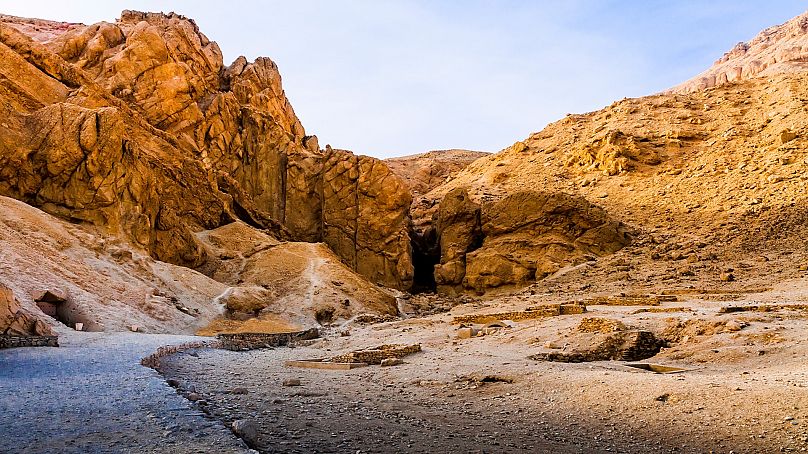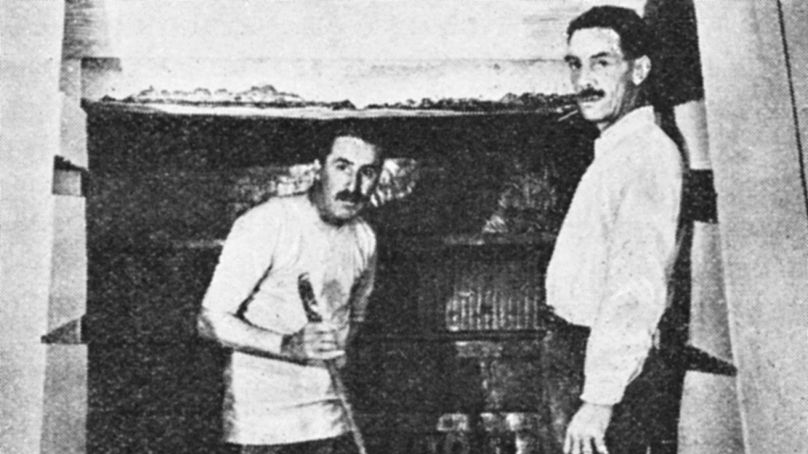On this day, 100 years ago, King Tutankhamun's sarcophagus was first disturbed by a group of British archaeologists. A set of mysterious deaths followed.
16 February 1923: The Curse of Tutankhamun is awaken
For long before the discovery of Tutankhamun’s tomb, theories of curses over anyone who disturbs the mummy of an Ancient Egyptian Pharaoh abounded.
One of the earliest accounts of an Egyptian mummy curse is the 1699 account of a Polish traveller who transported two mummies from Alexandria. The sea voyage was beset by great storms and the Pole had recurring visions until he threw the mummies overboard and the seas calmed.
After Egyptian hieroglyphs were deciphered in the 19th century, Egyptoligists started discovering actual curses inscribed on the walls of Old Kingdom tombs. “As for all men who shall enter this my tomb... impure... there will be judgement... an end shall be made for him... I shall seize his neck like a bird... I shall cast the fear of myself into him,” reads an inscription on the tomb of Khentika Ikhekhi.
It wasn’t until the discovery of King Tutankhamun’s tomb though that the curse of the Pharaohs entered the cultural conscience to a massive degree.
In late 1922, British archaeologist and Egyptologist Howard Carter finally found the tomb of the boy king after years of research in the Valley of the Kings for undiscovered tombs. On 4 November 1922, a staircase into the bedrock was discovered. Carter and his team began excavating and entered the tomb fully on 24 November.
Carter and his team, including Lord Carnarvon, the financier of the expedition, continued to discover the intact remains of the tomb, likely left better preserved due to the minor role the Pharaoh had, ascending the throne aged eight and dying 10 years later.
Finally, 100 years ago on this day, on 16 February 1923, Carter opened the sealed doorway to Tutankhamun’s burial chamber. Inside was the preserved sarcophagus of Tutankhamun.
Already, there were rumours that the excavation had awoken a curse. The month after first discovering the tomb, a report had been made of a cobra sneaking into Carter’s home and eating his canary. Locals were concerned this was the Royal Cobra, a snake worn on a Pharaoh’s head to strike enemies.
But it was after the archaeologists disturbed Tutankhamun’s burial chamber that the curse rumours started to really get going. Lord Carnarvon was the first to succumb to the curse. Carnarvon died from an infected mosquito bite on 5 April 1923.
The world’s news had all turned to Egypt and the discovery of King Tut’s tomb. Now it was in a frenzy, as people speculated on the curse of the Pharaohs. Italian dictator Benito Mussolini ordered the removal of an Egyptian mummy from the Chigi Palace and Sir Arthur Conan Doyle, creator of Sherlock Holmes, publicly suggested Carnarvon had been killed by the curse.
Not long after, George Jay Gould I, a visitor to the tomb, died on 16 May 1923 from a fever he developed during his time in Egypt.
The next two associated deaths came in 1928 and 1929, when Arthur Mace and Richard Bethell passed away.
Despite this, Carter dismissed the idea there was a curse. He even gifted his friend Sir Bruce Ingram a paperweight made of a mummified hand with a scarab bracelet with the inscription: “Cursed be he who moves my body. To him shall come fire, water, and pestilence.”
Ingram’s house subsequently burnt down and was then flooded when it was rebuilt. Still Carter denied the curse theory and there’s good reason to believe him. Only eight of the 58 people present when Tutankhamun’s sarcophagus was opened died within the next 12 years.
Regardless, the discovery of the tomb and the curse both ignited public interest in Ancient Egypt. Today, the archaeological discoveries of the Ancient Egyptian empire continue to bring millions of people to museum exhibitions worldwide.
Carter himself died in 1939 of lymphoma, 16 years after opening the tomb.













